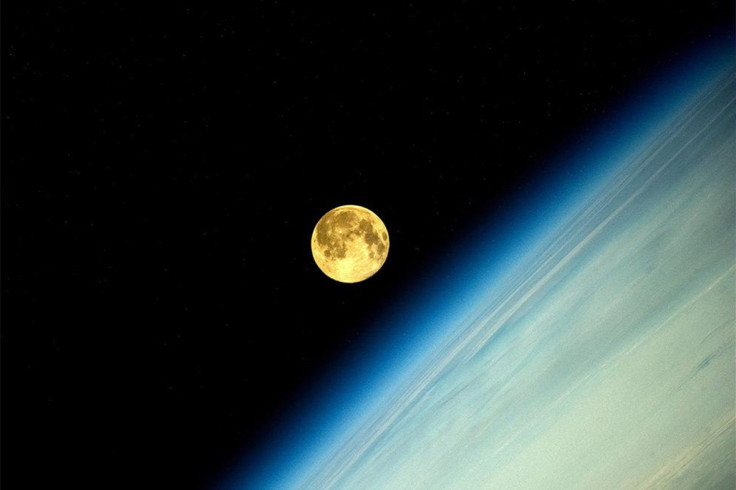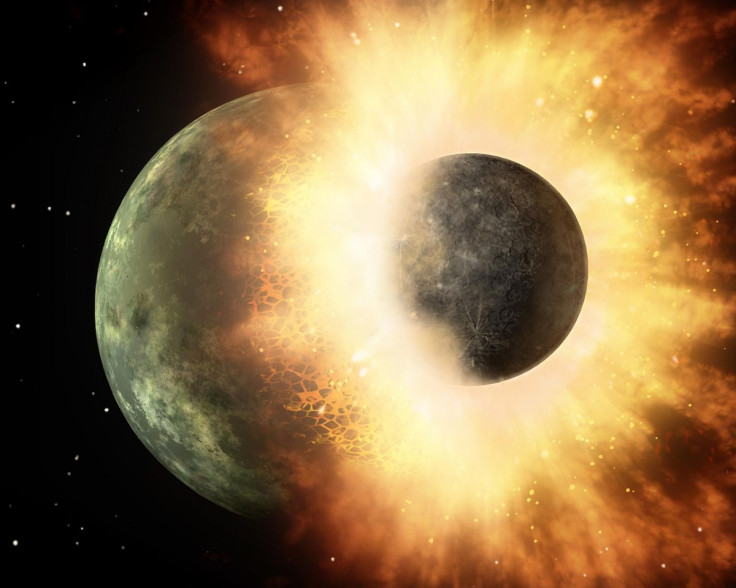How the Moon was Formed: Alternative Theories of Origins of Earth's Closest Companion

A week after the revelation of the second Supermoon, scientists are still debating the origins of the Earth's only natural satellite.
A one-off edition of the journal Royal Society A is being published this week, focusing exclusively on theories about the Moon's origin.
Professor Alex Halliday of Oxford University's Department of Earth Sciences, who co-edited the special edition, told the university's science blog: "Today, hundreds of years after Galileo showed the world the mountainous features of the Moon and started modern observational astronomy."
"Hundreds of years after John Wilkins and Robert Hooke at Oxford discussed how to build a space craft to visit the Moon, and went on to found the Royal Society, and decades after Armstrong and colleagues brought back those precious samples of lunar rock, we still do not have a satisfactory explanation for how the Moon formed," he added.
What is the Giant Impact Hypothesis?
This is the most widely accepted explanation for the origin of the Moon, which became popular in 1984, and it involves the collision of two protoplanetary bodies during the early period of the Solar System evolution.
Satisfying the orbital conditions of the Earth and Moon, it also accounts for the small metallic core of the Moon. The colliding body has sometimes been referred to as Theia, the mother of Selene, the Moon goddess in Greek mythology.
There are still a few unresolved problems facing it, such as the Moon's volatile elements not being as depleted as expected from such an energetic impact.

Prof Halliday points out another problem with the theory: "Those scientists developing the computer models use a technique called smoothed particle hydrodynamics and this treats the material in the proto-Earth and Theia as made up of large numbers of equally sized large fragments that interact with each other by gravity."
Yet the proportions of the two planets forming their moon are very different: "In nearly all successful simulations the Moon is mainly made up of material from Theia."
"This is hard to reconcile with the isotopic evidence that the Moon formed from atoms like those found in the Earth rather than in other parts of the Solar System."
Alternative: Fission Theory
This is the hypothesis that a spinning Earth expelled part of its mass, proposed by Charles Darwin's son George in the 1880s.
The theory suggests the Pacific Ocean is the scar of this event. Yet it is now known that the oceanic crust that constitutes the ocean's basin is relatively young, about 200 million years old and less. The Moon is much older, as it does not consist of oceanic crust but of mantle-material which originated inside the proto-earth in Precambrian.
Alternative: Capture Theory
This proposes that the Moon was captured by the Earth and gained popularity in the 1980s. Yet a problem arose with the capture mechanism, as a close encounter with our planet normally results in a collision or a change in direction.
The hypothesis does not explain the essentially identical oxygen isotope ratios of the two worlds.
Alternative: Accretion
According to this hypothesis, the Earth and Moon formed as a double system. But the theory does not explain the angular momentum of the Earth-Moon system or why the Moon has a relatively small iron core, compared to our planet's larger one.
Alternative: Georeactor explosion
This was put forward in 2010, which suggests the Moon might have been created from the explosion of a georeactor - a natural nuclear fission reactor - found along the core-mantel boundary at the equatorial plane of the rotating Earth.
Experts dismissed the theory, stating that a georeactor would melt itself down to the Earth's core.
Planetary physicist David Stevenson of Caltech, told New Scientist: "The whole idea is not physically sensible."
© Copyright IBTimes 2025. All rights reserved.






















